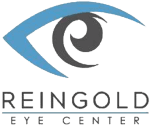Who is at risk for CRVO?
CRVO usually happens in people who are aged 50 and older.
People who have the following health problems have a greater risk of CRVO:
To lower your risk for CRVO, you should do the following:
Central Retinal Vein Occlusion (CRVO) Diagnosis and Treatment
Your ophthalmologist will widen (dilate) your pupils with eye drops and check your retina. They may do a test called fluorescein angiography. Yellow dye (called fluorescein) is injected into a vein, usually in your arm. The dye travels through your blood vessels. A special camera takes photos of your retina as the dye travels throughout the vessels. This test shows if the retinal vein is blocked. People under the age of 40 with central retinal vein occlusion (CRVO) may be tested to look for a problem with their blood clotting or thickening.
How is CRVO treated?
The main goal of treatment is to keep your vision stable. This is usually done by sealing off any leaking blood vessels in the retina. This helps prevent further swelling of the macula. Your ophthalmologist may treat your CRVO with medication injections in the eye called “anti-VEGF injections.” The medicine can help reduce the swelling of the macula. Sometimes steroid medicine may be injected into the eye to help treat the swelling. If your CRVO is very severe, your ophthalmologist may do a form of laser surgery. This is called pan-retinal photocoagulation (PRP). A laser is used to make tiny burns to areas of the retina. This helps lower the chance of bleeding in the eye and keeps eye pressure from rising too much. It usually takes a few months after treatment before you notice your vision improving. While most people see some improvement in their vision, some people won’t have any improvement.
